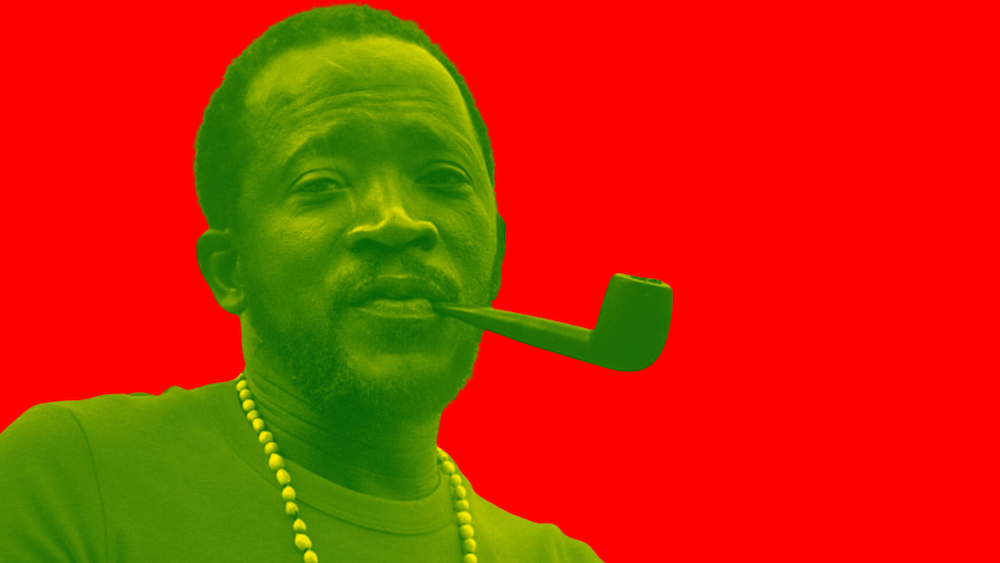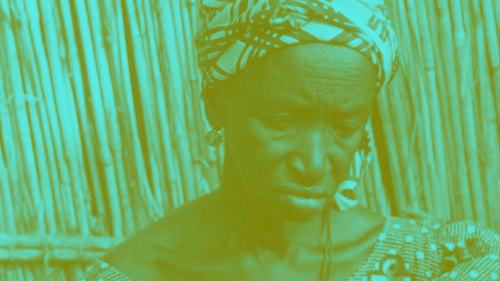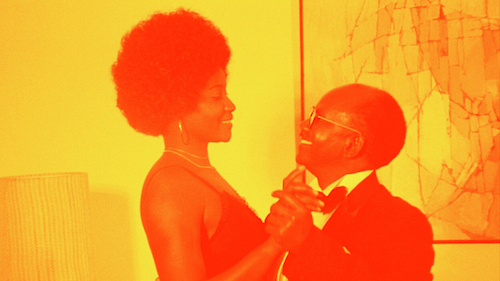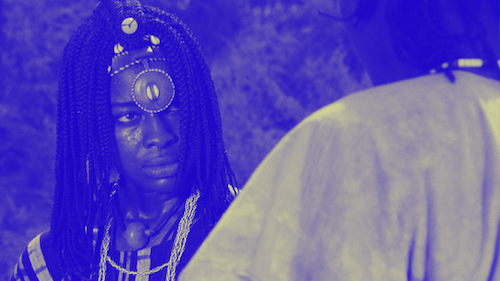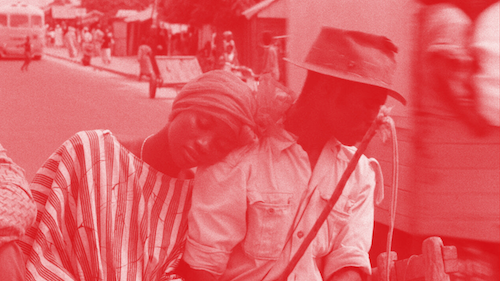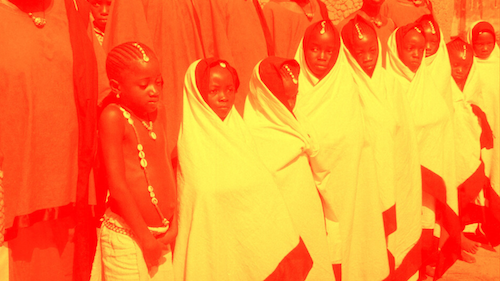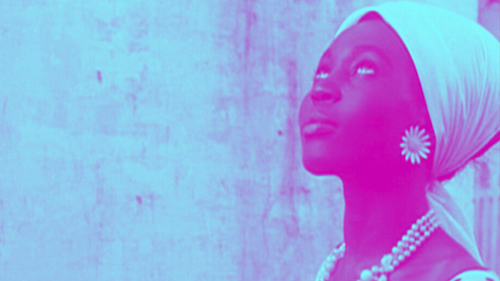Filmography Worship: Ranking Every Ousmane Sembène Film
Written by Andreas Babiolakis
Filmography Worship is a series where we review every single feature of filmmakers that have made our Wall of Directors
The godfather of African cinema, and the master of the entire continent ever since. Much has been said about Senegalese master Ousmane Sembène, from the importance of his early works (he is one of the first Black African filmmakers with his short film Borom Sarret released in 1963) and the novels he wrote while directing, to the important social issues he tackles with each and every film (not to mention the amount of genres and tones he strives for, never confining himself to just one style of filmmaking). It’s easy to proclaim that Sembène was a driven artist, and that would only be scratching the surface of his distinction.
Sembène was the son of workers and was drafted into the Senegalese Tirailleurs at the age of twenty-one; these parts of his younger years shaped the stories he wanted to tell, from the secrets of everyday, working-class citizens of Africa (and their political hardships) to the extremities of colonialism, privilege, war, and both religious and social impositions. A practitioner of the religion of Serer (the belief in the Supreme God Roog), Sembène included his faith in his works as he — the outsider behind the pen and camera — peered on struggling souls trying to get by. Every film focuses on a different battle or dilemma, from poverty and the Thiaroye massacre, to female circumcision and socioeconomic corruption. Every film feels authentically like Sembène’s own style, but his ambition to tackle so many different topics with varying tones and aesthetics showcases his obsession with film and his determination to not just bring the medium to Africa — and the nation’s art to the masses — but to keep pushing himself at every chance.
Sembène has a bit of a small filmography, with just nine feature films (and three shorts) over the course of forty years. Last year was Sembène’s centenary and his impact continues to be felt (if anything, it only proceeds to grow). Sembène never made an outright bad film, as even the lower films on this list have something to say. For me, his magnum opus is an obvious choice, so the real substance of this list comes from the strength of the majority of his career and the difficulty of ranking the bulk of his works. I’ll be bypassing his early documentary short L'empire sonhrai, because I frankly don’t even know if it is accessable in any way at this point despite its IMDb and Mubi pages insisting that it has been seen in the twenty first century; once I have access to it, I will gladly include it. If you want to get in touch with Senegalese and African cinema, look no further than the raw power and artistry of this generational auteur. Here are the films of Ousmane Sembène ranked from worst to best.
12. Niaye
Sembène kicked off his career with a few short films, and, while one was sensational and especially noteworthy, a couple of others were good in their own way but not quite as strong. Niaye is the lowest film on this list but it still greatly matters in Sembène’s filmography. Shot on 16mm, this progressive depiction of a teen pregnancy shaking up a small community lasts half an hour, yet it possesses the emotional push of a full-on feature film. I’d recommend this only to those who are wanting to complete Sembène’s filmography, but those interested in what such a discussion may look like in Africa via a sixties lens may be surprised at how this film holds up (decently enough).
11. Tauw
Another early Sembène short (and the last short he would make), Tauw is slightly better than Niaye, but I feel like it has less justification for being only decent, given how the auteur directed a couple of masterworks right before this film. Nonetheless, Tauw is similarly good enough to warrant a watch, but perhaps it is stunted by its short duration of twenty-five minutes. This film about a struggling man who is feeling pressurized by loved ones and society to become a better version of himself possesses the kind of helplessness that Sembène’s works almost always contain, and it does have an interesting captivating quality to it. I just wish there was more here.
10. Faat Kiné
The weakest Sembène feature film is also his most optimistic as Faat Kiné is a bright-ish dramedy that follows the titular character as she makes a name for herself and works her way up in post-colonial Senegal. It almost feels like Sembène’s answer to the comedies and rom-coms of its time, and it is worth checking out for this reason alone. Oddly enough, Faat Kiné was the first Sembène film I ever saw back in my undergrad, maybe because it is uncharacteristically far less depressing than his typical works. While I think there are stronger films to start with, maybe this lighter — albeit still serious — film may be where you want to begin as well should you not want to dive straight into the deep end.
9. Guelwaar
The quality of Sembène’s films leap in quality from this point on, and Guelwaar is quite an underrated, under-discussed film in his career. A bit of a genre bending look at religious conflict, Guelwaar searches for the highs and lows, amongst the living and the dead, for answers regarding what beliefs mean to individuals. Now that Sembène is getting recognized and researched more and more, a film like Guelwaar should be on your radar if it isn’t already. It’s a risky film that doesn’t hold back on its subject matter (but, then again, Sembène never did tiptoe).
8. Xala
Let’s not forget that Sembène was also an author, and one time that he adapted his own writing is with Xala: a satire that is willing to get as scathing as possible. Based on a greedy, successful businessman and a sudden curse that he is desperate to get rid of (impotency as soon as he wants to procreate, because Napoleonic phallus syndrome will never not be funny when it comes to the elite), Xala has a bit of a wink and a crooked smile to its nature. It is quite relentless with its metaphorical and literal depictions of corruption and egotism. I think Xala’s style of comedy and commentary went over some heads when it first came out given its somewhat lukewarm reception, but it has aged quite well, down to its open ended conclusion of karmic, pathetic sacrifice.
7. Ceddo
Another under-seen Sembène pick (although that will likely change with the Criterion Collection box-set), Ceddo is similar to Guelwaar (with its depictions of religious conflict) but even more dangerous and severe (to the point that it was even banned in multiple countries, although this wasn’t rare for Sembène, to be fair). Focusing on the friction between Christianity and Islam in post-colonial Africa, Ceddo may not have all the answers, but no one does. Sembène is at least daring enough to put it all on the line with this unflinching film: one where taking sides or seeing matters as just black-and-white just doesn’t cut it.
6. Mandabi
Mandabi went from being virtually impossible to watch (and all but lost) to becoming one of Sembène’s most well known and respected works. What can money do to a person? This isn’t just a question about negatives and greed, but also the luck that one needs to turn their life around. Mandabi concerns itself with the many ways that money can save — or destroy — a person, a religion, a society, or a relationship. The first feature film to be released entirely in an African language (the Niger-Congo dialect of Wolof), Mandabi is as special as it is powerful and riveting.
5. Borom Sarret
Not only is Borom Sarret Sembène’s best short film, it is a groundbreaking short that feels influencial to this day (perhaps its second life post remastering helps. One of the first films to be made by a Black African, Borom Sarret feels representative of the Italian neo-realist movement. The life of a wagoner is depicted in twenty minutes: we only see the present, and are given a new obstacle that hits him when he least expects it. We are left with an open-ended dilemma and a question of what is to come. That’s life, unfortunately, and the emptiness that comes after Borom Sarret is somehow the film’s greatest achievement. We go to bed after hardship knowing that tomorrow is another day, but Borom Sarret reminds us that tomorrow can be the start of the rest of our lives, for better or for worse.
4. Camp de Thiaroye
Sembène’s answer to the war genre, Camp de Thiaroye is a heavy film that appears to be heading towards one direction before it completely blindsides you (given that you don’t know the details of the Thiaroye massacre ahead of time). A rebellious effort and the most epic release Sembène ever made, Camp de Thiaroye is an exercise in an auteur — who usually works with restraints — working large. He’s as stern as ever with this anti-war, anti-colonialist release that builds and builds until it experiences its extreme climax. A beloved film in Sembène’s career yet a criminally underrated work in war based cinema, Camp de Thiaroye is as visceral as the genre gets.
3. Emitaï
Sembène worked with metaphors a lot, but none are quite as effective as the tree at the centre of his 1971 drama, Emitaï. The congregational spot for a village to pray underneath during World War II, the tree marks a hope for growth and perseverance amidst bloodshed, political takeover, and droughts. It’s needed in a film this raw and unwavering, as Sembène gives us allegorical and realistic situations to shed tears over. We watch a beautiful community and culture get threatened time and time again. Emitaï finds positivity in the next stages of life — or the after life — whilst staring in the face of oppressors. It never backs down. Sembène didn’t care what hot water his films got him in, and his art remains earnest and true as a result.
2. MoolAadé
Sembène’s swansong, Moolaadé (titled after the symbolic image of a village’s young girls standing up to violence and sexism), is proof that the strongest stories will take films the furthest, far more than fancy production or high budgets ever will. Released at the turn of the new millennium and century in 2004, Moolaadé goes up against far more polished and plentiful films. As if that ever mattered to an artistic and narrative purist like Sembène, who ended as much of a cinematic activist as he ever was with this heartbreaking tale of female circumcisions (conducted typically at a very young age, just to make matters worse). One of the most effective jump cuts I’ve ever seen takes place in Moolaadé as a montage juxtaposes two horrific realities that many African women have been forced to endure: it’s a sequence I can never scrub from my memory. Up against many films that tried to look ahead in the twenty first century, Sembène’s Moolaadé focused on the now in a West African village, and the director’s brilliance allows the film to stand out far ahead of its peers of its time. If you were born to make motion pictures, you know how to draw an audience no matter what, when, or how.
1. La noire de…
I’ll never forget the first time I watched La noire de… (or Black Girl, as it is more commonly known in the United States). I’ve seen enough films to know that much can happen in a lean fifty five minute runtime, but I wasn’t prepared for the wallop I got from this colonialist fable. We follow a young woman, Gomis Diouana, strive to leave an impoverished, Senegalese village and live a life of work and success. She winds up in France and is stuck working for a rich, Caucasian family as a housekeeper (she was misled and told she would be a nanny of the family’s children). Her experiences with racism and sexism turn the walls of a small domicile into a hell for Diouana, and she is now removed from her home and unable to work her way out of her nightmare.
While Sembène’s colour films are rich in their own aesthetics, I cannot shake off how exceptional he was with crafting black-and-white imagery, and La noire de… is the finest example. Every shot is gorgeously crafted yet gut wrenching given the focal points within it (don’t forget about the metaphorical details that Sembène sprinkles in each image). As we watch this unfortunate life fall apart, we don’t have any solutions for poor Diouana who serves as the film’s representation of the impossibilities many experienced back in the sixties (and still do to this day) when the cards of civilization are stacked against them.
La noire de… is as perfect as film gets. Even with its low budget production techniques, the motion picture grabs you from the very start and refuses to let go; the shot (you’ll know what I mean if or when you watch La noire de…) is one that you can never shake off, and it remains one of the most impactful of any film I’ve ever seen. Not only is La noire de… easily Ousmane Sembène’s greatest film, it may very well be the strongest film to ever come out of the entire continent of Africa. It is a masterpiece of a director, an era, and a nation. You’ll never forget how a film like La noire de… makes you feel, and its continued rise in popularity and acclaim is a testament to its might.
Andreas Babiolakis has a Masters degree in Film and Photography Preservation and Collections Management from Ryerson University, as well as a Bachelors degree in Cinema Studies from York University. His favourite times of year are the Criterion Collection flash sales and the annual Toronto International Film Festival.

